Neutral density filters
Mar 3, 2019 07:58:26 #
This has probably been discussed before but I have not been participating very long
My questions follow
Graduated neutral density filter. How many f stops is the most useful?
Neutral density filter. How many f stops is most useful?
B&W has an adjustable 1-5 f stop filter. Is this the best way to go or is a particular f stop all I need?
I appreciate your assistance
My questions follow
Graduated neutral density filter. How many f stops is the most useful?
Neutral density filter. How many f stops is most useful?
B&W has an adjustable 1-5 f stop filter. Is this the best way to go or is a particular f stop all I need?
I appreciate your assistance
Mar 3, 2019 08:06:50 #
mizzee
Loc: Boston,Ma
Can’t help on the graduated filter. Six stops was recommended to me which is what I got and later added a 10 stop. I had bad luck with the adjustable ND filter and wound up returning it because moisture got in between the elements.
Mar 3, 2019 08:13:27 #
RWR
Loc: La Mesa, CA
twilight wrote:
This has probably been discussed before but I have not been participating very long
My questions follow
Graduated neutral density filter. How many f stops is the most useful?
Neutral density filter. How many f stops is most useful?
B&W has an adjustable 1-5 f stop filter. Is this the best way to go or is a particular f stop all I need?
I appreciate your assistance
My questions follow
Graduated neutral density filter. How many f stops is the most useful?
Neutral density filter. How many f stops is most useful?
B&W has an adjustable 1-5 f stop filter. Is this the best way to go or is a particular f stop all I need?
I appreciate your assistance
There is no one answer - depends upon the scene, and how many stops more exposure you want.
Mar 3, 2019 08:14:08 #
twilight wrote:
This has probably been discussed before but I have not been participating very long
My questions follow
Graduated neutral density filter. How many f stops is the most useful?
Neutral density filter. How many f stops is most useful?
B&W has an adjustable 1-5 f stop filter. Is this the best way to go or is a particular f stop all I need?
I appreciate your assistance
My questions follow
Graduated neutral density filter. How many f stops is the most useful?
Neutral density filter. How many f stops is most useful?
B&W has an adjustable 1-5 f stop filter. Is this the best way to go or is a particular f stop all I need?
I appreciate your assistance
I use a variable.
Hoya makes an excellent one.
I have two photos taken at minimum and maximum setting, note there are no funny things like a cross happening as many say happens. This is because they do not know how to properly use a variable ND. I am including the Filter with the markings from minimum to maximum.
Finally the dreaded "Cross" can be made if you go beyond the setting on the filter. That is using it incorrectly. I am also showing an example of this.
So properly used they are wonderful and save having to carry a crap load of filters around and you get exactly the strength you want.
Minimum
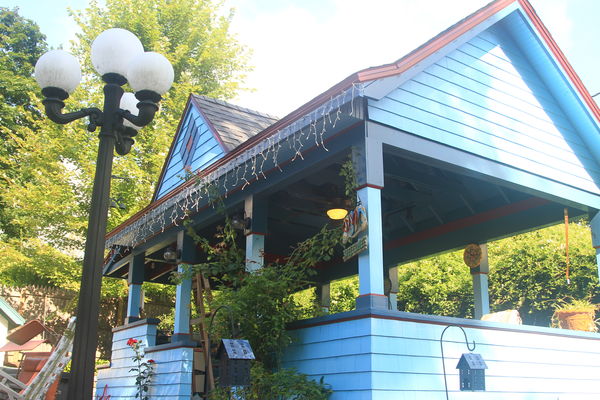
Maximum
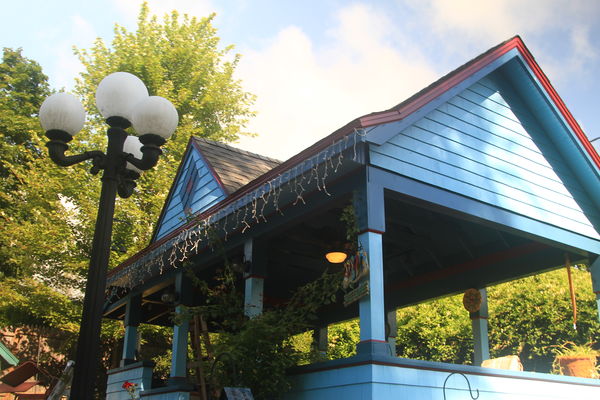
Filter
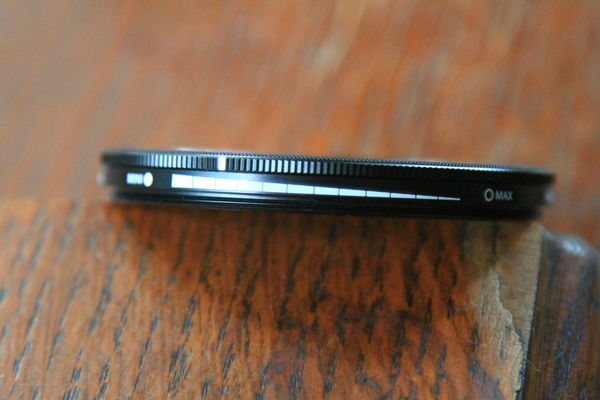
Cross Pattern
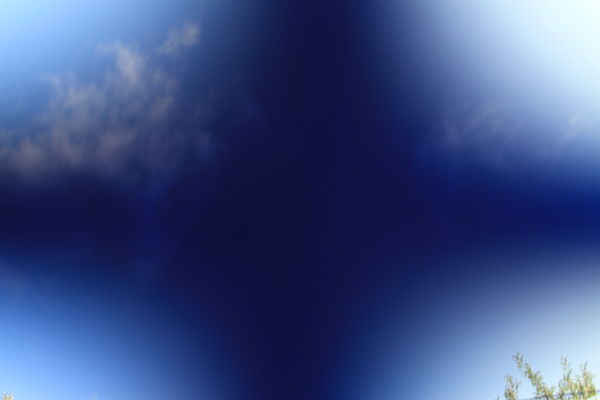
Mar 3, 2019 08:37:41 #
RWR wrote:
There is no one answer - depends upon the scene, and how many stops more exposure you want.



Mar 3, 2019 08:50:44 #
Architect1776 wrote:
I use a variable. br Hoya makes an excellent one. ... (show quote)
Although I absolutely agree with your statement, the OP was asking about selecting a graduated ND filter.
Mar 3, 2019 09:52:56 #
rook2c4 wrote:
Although I absolutely agree with your statement, the OP was asking about selecting a graduated ND filter.
I took it as both:
"Graduated neutral density filter. How many f stops is the most useful?
Neutral density filter. How many f stops is most useful?"
Mar 3, 2019 10:41:05 #
twilight wrote:
This has probably been discussed before but I have not been participating very long
My questions follow
Graduated neutral density filter. How many f stops is the most useful?
Neutral density filter. How many f stops is most useful?
B&W has an adjustable 1-5 f stop filter. Is this the best way to go or is a particular f stop all I need?
I appreciate your assistance
My questions follow
Graduated neutral density filter. How many f stops is the most useful?
Neutral density filter. How many f stops is most useful?
B&W has an adjustable 1-5 f stop filter. Is this the best way to go or is a particular f stop all I need?
I appreciate your assistance
Breakthrough Photography has a good guide to ND filters and what strengths are appropriate for what you might want to do.
https://breakthrough.photography/pages/nd-buying-guide
Their filters are excellent.
Also check out their Long Exposure Guide at
https://theartofphotography.lpages.co/52-page-long-exposure-guide/
One benefit of adjustable ND filters is that you can open it up to find focus and then stop it down for the exposure. The 'Maltese Cross' effect is more of a problem with wide angle lenses than normal lenses, but I have used them succesfully with a 12mm APSC lens.
For graduated ND filters. you also need to consider the 'softness' of the edge. Harder edges are useful for things like sunsets over water. Softer for more general use. It is pretty easy to create the effect of graduated ND filters in most PP programs as long as you hven't blown out the highlights.
Mar 3, 2019 21:02:53 #
twilight wrote:
This has probably been discussed before but I have not been participating very long
My questions follow
Graduated neutral density filter. How many f stops is the most useful?
Neutral density filter. How many f stops is most useful?
B&W has an adjustable 1-5 f stop filter. Is this the best way to go or is a particular f stop all I need?
I appreciate your assistance
My questions follow
Graduated neutral density filter. How many f stops is the most useful?
Neutral density filter. How many f stops is most useful?
B&W has an adjustable 1-5 f stop filter. Is this the best way to go or is a particular f stop all I need?
I appreciate your assistance
They are all the most useful, it depends on what you want to use them for, that decides what strength you'll want!
Mar 4, 2019 06:07:48 #
I got an ND10 for Christmas, but it was a bit too much for lower light available to me in the New year. Did the ornamental waterfall O.K., but very single tree was moving - even though there was no apparent breeze.
Should be better now more light is available.
I wanted it for silky moving water and softened cloud formations.
I'd go maybe an ND6 for lower light seasons.
Should be better now more light is available.
I wanted it for silky moving water and softened cloud formations.
I'd go maybe an ND6 for lower light seasons.
Mar 4, 2019 06:17:52 #
billnikon
Loc: Pennsylvania/Ohio/Florida/Maui/Oregon/Vermont
twilight wrote:
This has probably been discussed before but I have not been participating very long
My questions follow
Graduated neutral density filter. How many f stops is the most useful?
Neutral density filter. How many f stops is most useful?
B&W has an adjustable 1-5 f stop filter. Is this the best way to go or is a particular f stop all I need?
I appreciate your assistance
My questions follow
Graduated neutral density filter. How many f stops is the most useful?
Neutral density filter. How many f stops is most useful?
B&W has an adjustable 1-5 f stop filter. Is this the best way to go or is a particular f stop all I need?
I appreciate your assistance
For me, I like to take 30 second exposures, I like to stop down about three stops from wide open.
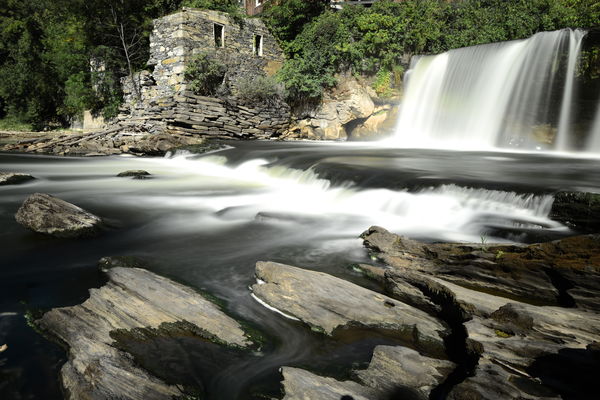
Mar 4, 2019 06:56:21 #
Mar 4, 2019 07:20:17 #
If you have Photoshop skills avoid GND filters, as the effect can be done much better and with much more control using masking and two exposures
Mar 4, 2019 07:32:53 #
repleo wrote:
Breakthrough Photography has a good guide to ND fi... (show quote)
2 very good references - thanks
Mar 4, 2019 07:40:27 #
kymarto wrote:
If you have Photoshop skills avoid GND filters, as the effect can be done much better and with much more control using masking and two exposures
True - although best in RAW so you have enough data for PS grad filter to find something to work with

My big issue has always been the clutter that comes with carrying multiple filters, for multiple lenses. Made much easier when I replaced my 82mm filter lens. As most lenses use 77m I now carry just 3 thin rim filters - CPL, ND3 and ND6. This gives 3, 6, and 9, although there is a hint of vignetting at 18mm with 3+6 it can easily be removed with PS
If you want to reply, then register here. Registration is free and your account is created instantly, so you can post right away.





